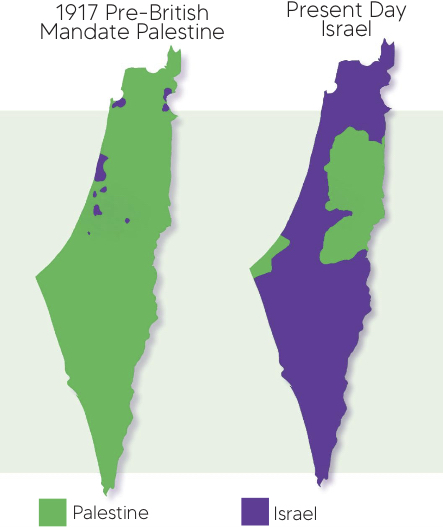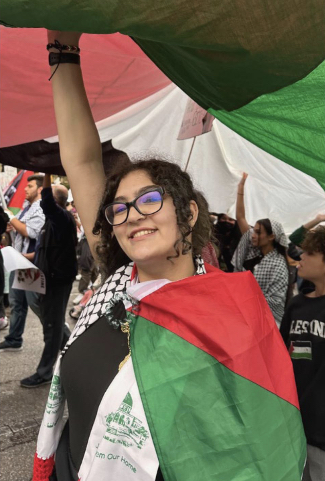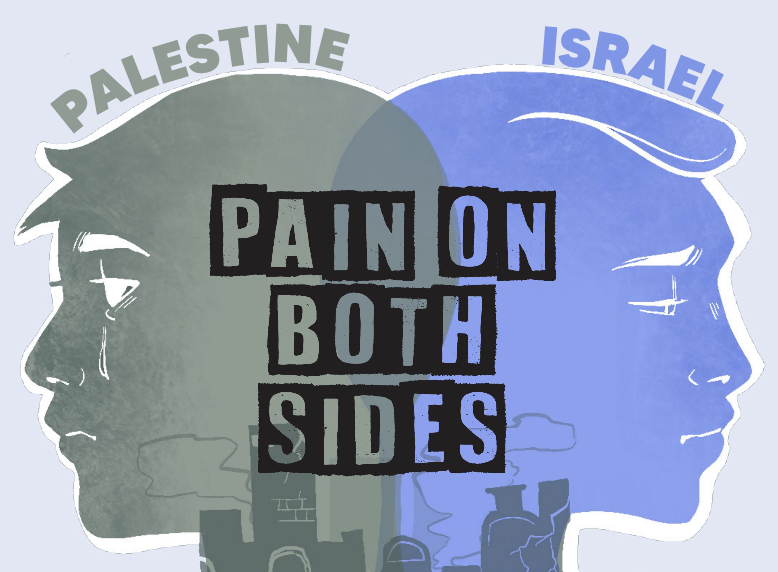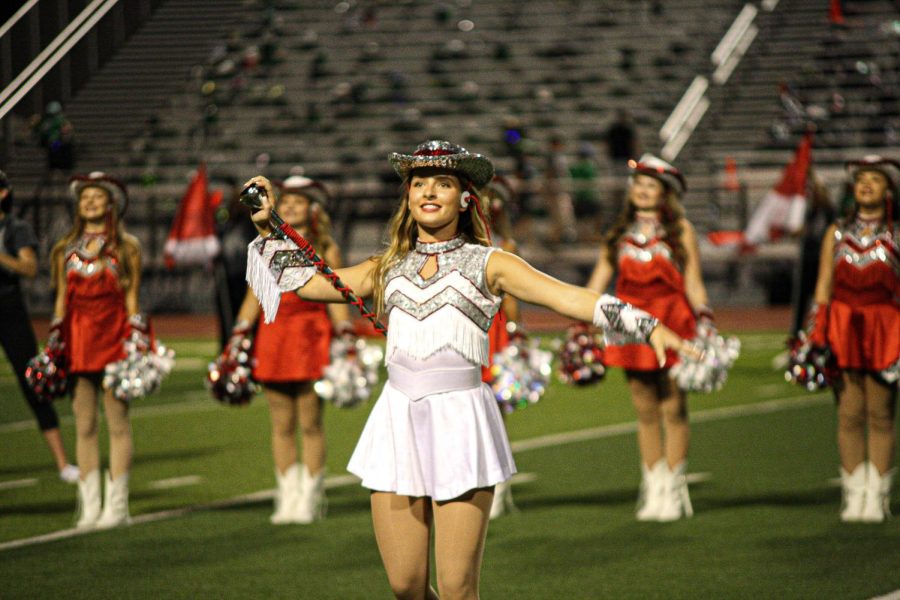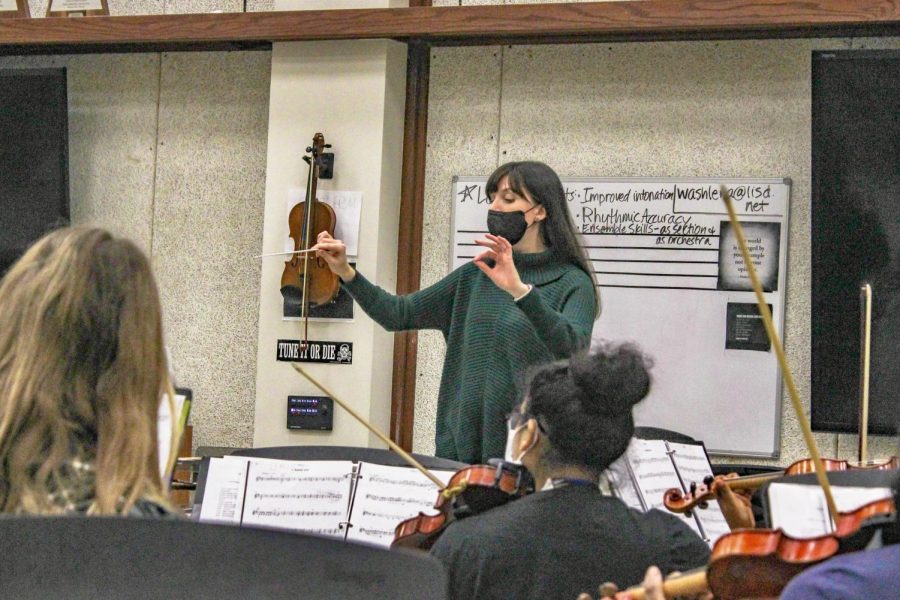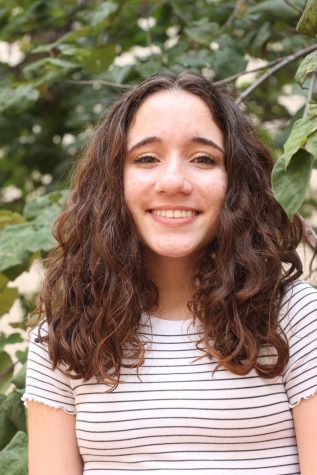Editor’s note: This story included in the portfolio that won first place for writer of the year in the 2020 National Scholastic Press Association individual awards competition. It was also included in the portfolio that was named superior in the 2021 TAJE Best of Texas contest and was named an excellent news-feature story. It won third place for news stories in the Press Women of Texas high school journalism contest.
Flower Mound protester Laura Haines looked at the black man in front of her. The sound of the protesters cheering and cars honking their horns in support was loud, but the man stayed silent for two minutes; his jaw was trembling too hard for him to speak.
Haines slipped her mask down from her mouth and spoke for him.
“I know it’s the age of COVID, but I just have to hug you right now.”
Haines wrapped her arms around the stranger as he began to sob. They leaned on one another as community members stood on the sidewalk along Long Prairie Road, holding signs that said “Black Lives Matter.”
“When he could finally find his words, he told me about the heaviness that he and his band of brothers and his family have all been feeling,” Haines said. “When he came by, it was just nine or 10 of us, but it warmed his heart so much. He was like, ‘I didn’t even realize I needed this relief, this lifting.'”
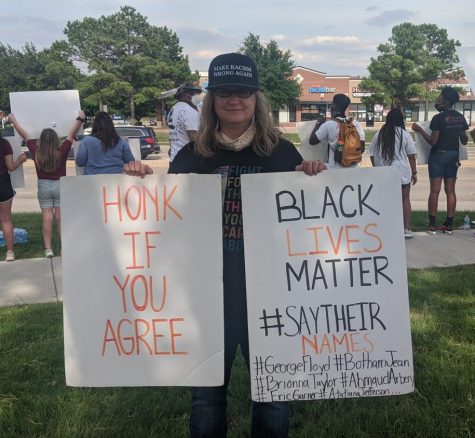
According to Haines, many other community members had similar emotions while taking part in the peaceful protest, which is one of hundreds across the nation in response to George Floyd’s death.
“It’s about spreading hope,” Haines said. “I can’t tell you how many people we’ve seen in their cars driving by, honking and waving, people of color weeping, crying, saying, ‘Wow,’ they can’t believe what they’re seeing.”
Floyd, an African American man, died on May 25 when Minneapolis Police Officer Derek Chauvin, who is white, kneeled on his neck for over eight minutes despite Floyd saying he couldn’t breathe. This inspired NCTC Professor Sara Foltermann to go to the protest on Monday.
“I think of friends that I have and I think of their faces, and I can’t be quiet,” Foltermann said. “I think it’s very sad that when someone is murdered they say ‘But he was doing this. But he was doing that.’ He was killed and there’s a video to show it. Anything after that doesn’t matter.”
Marcus graduate Emily Vanzant, was also protesting Monday. She said it was in response to the systematic oppression she sees in the police force.
“It’s a lot bigger than just George Floyd,” Vanzant said. “There’s a lot of cases where innocent African Americans have been murdered by the police and by civilians, and they haven’t been convicted or they’ve been given sentences that are way too lenient. I’m fed up.”
Haines is planning on protesting on Tuesday and Wednesday from 1:00 p.m. to 7:30 p.m. and does not know when the protest will end.
“For me, it’s as long as people want to come out because that’s what feels like the right thing to do,” Haines said. “So I’m rolling with the flow. I’m rolling with what the people want, what the people are ready to do. The time feels right.”
The original idea came from protest organizer Sarah Edwards when her daughter brought up that her friend could have been in the same situation as George Floyd.
“I’m a mom and my kids were upset by what they were seeing,” Edwards said.
This promoted a discussion between Edwards and her two daughters, ages 11 and 14, about racism and what they could do to support Black Americans.
“It was never anything about the police for me because I think it’s a humanity issue,” Edwards said.
They then decided to make signs and stand on the corner of Long Prairie Road and Cross Timbers Road.
“I want my children to understand the issues and see what is going on in the world around them,” Edwards stated in a Facebook post about the protest. “I want to educate them and hopefully ignite change by educating the next generation.”
She invited a moms group to join her near Kroger, but her post was removed. Haines reached out to Edwards and suggested she post the same invitation to Flower Mound Neighbors.
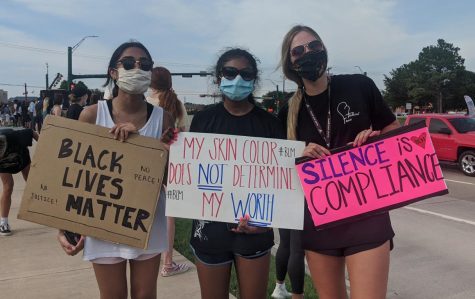
The protest officially began on Friday with about 40 people. According to Haines, the number of participants roughly doubled each day and 243 protesters showed up on Monday.
“I think it goes to show that when you show up, other people will join you and that’s what we see here,” Haines said. “All these people can spread the word. They wheeled around in their car to read our signs again and they came around, parked and picked up signs and joined us.”
Haines said that most of the protesters were white on the first day, but people of all backgrounds, religions, races and ages soon joined. A total of 60 protesters gathered on Sunday, including members of the local synagogue, mosque and various churches. Toddlers held signs alongside their grandparents, with ages ranging from 2 to 90. One woman told Haines that she took part in similar protests in the 1960’s.
Flower Mound High School graduate Sarah Joseph took part in the protest on Monday. She said that seeing how racially diverse the group was made her proud to live in Flower Mound, which is about 80 percent white.
“I think this is the right step forward,” Joseph said. “Not everybody here is white. Not everybody here is brown. Not everybody here is black. I think the diversity — if we come together, keep uniting and not focus on political ideologies, but more of uniting together as a nation — will get far.”
Though some protests across the country have resulted in violence, the Flower Mound group has had a mostly peaceful experience with support from the community, according to McKamy Middle School teacher Katherine Gould.
“We came here yesterday and there was a good crowd but it’s just grown today. People have come by and honked, and police have come by,” Gould said. “Nothing Bundt Cakes have come by. People have dropped off water and just been really supportive in the movement.”
According to Haines, one of the main obstacles that the protesters have faced is people driving by and raising their middle finger, giving a thumbs down or revving their engines. Others have also come up to the protesters directly and tried to argue by saying “All lives matter.” Although she and other protesters tried to avoid engaging with them, Haines finds this argument problematic.
“I think a lot of the whole ‘all lives matter’ retort is really just to change the focus from Black Lives Matter,” Haines said. “Black lives are the bone that’s broken and needs setting and healing. Saying ‘All lives matter’ is like saying, ‘But don’t you need to check all of the other bones first?’”
Additionally, Joseph said some people may not want to attend the protest because they are not personally affected by police brutality or it makes them uncomfortable. However, she hopes that more people will overcome this by realizing the impact they can have.
“If you’re ignoring the issue, you’re a part of the problem and there’s no going around it,” Joseph said. “If you have a voice, use it because the dead can’t use their voice anymore.”
The worst reaction the protesters experienced was on Saturday night when people parked next to Haines. She said that one of the men sat on his tailgate for the last 45 minutes of the protest without speaking. She felt like he was trying to scare the protestors. Some grew worried that they would be followed home, but the man did not do anything else to the protesters.
“We saw them, we saw what they were doing, and we weren’t going to be intimidated. We just kept coming back,” Haines said.
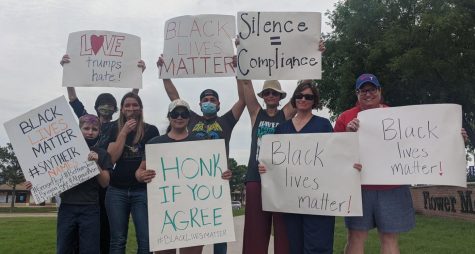
Haines believes that the positive impact of the protest and the support it has received from the community strongly outweighs the issues they have faced and hopes it will continue to grow.
“For me, it’s a beautiful thing, but I know that for the people of color that are here, it means something even deeper. They told me that they have chills and… it’s making people feel hopeful,” Haines said. “I want to see it keep going because it’s clearly encouraging others to not look away and to not change the subject.”




